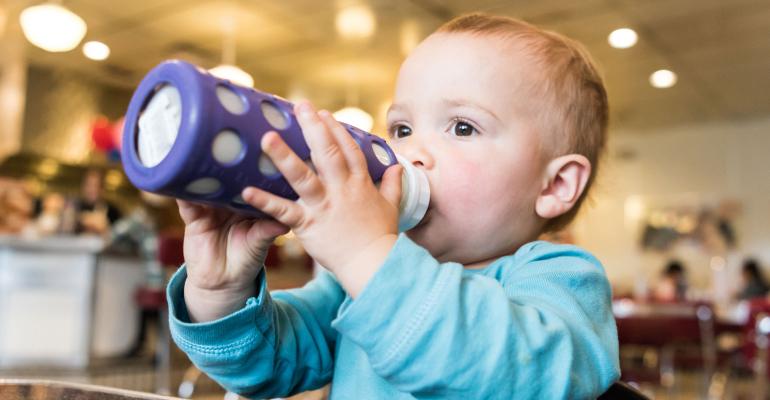As of June 19, 2019, a new federal standard for high chair safety will take effect, enabling restaurateurs to take even better care of some of their most valuable and vulnerable customers — infants and toddlers who visit with their families.
The new standard, ASTM F404-18, is intended to reduce the number of child injuries associated with high chairs. Between 2011 through 2016, an estimated 1,600 injuries related to high chairs occurred in restaurants and were treated in U.S. hospital emergency departments, according to Consumer Product Safety Commission (CPSC) data.
What should operators do?
As the effective date approaches, operators are advised to review the new requirements and determine whether their current high chair inventory is compliant. The new standard involves all high chairs for home and restaurant use, both domestically made and imported into the U.S. Restaurateurs will not be required to replace existing chairs that fail to comply. But as of June 19, only compliant high chairs will be permitted for sale. Operators should be aware that some high chairs currently on the market are already compliant with the new standard but many are not.
How do you to tell if a high chair is compliant?
It can be difficult for operators to determine if a high chair they own is compliant with the new standard. The best way to be certain is to inquire with the high chair manufacturer. With the new standard likely to increase public attention to high chair safety, operators should be prepared for customers to ask whether their high chairs are compliant.
What’s changed in the new standard?
The new specifications incorporate voluntary standards made by ASTM International, an international nonprofit standards association. They primarily address design and stability issues, especially the seat surface area, restraint system, armrest, tray and footrest. Most high chair injuries occur when children climb in or out of the chair, when chairs tip over or after a restraint device fails.
Here are five key safety improvements of high chairs that comply with the new standard:
- Rearward stability, to prevent chairs from tipping backwards
- More informative warning labels about tipping hazards
- A passive crotch restraint system
- An active three-point restraint system
- Product registration, to be alerted to possible recalls.
The more stringent requirement for rearward stability is necessary because high chairs elevate a child to table level and have a high center of gravity. That makes them subject to tipping, especially if safety straps are not used properly and the child stands up or crawls in or out of the high chair.
Another tipping risk occurs when a child in a high chair kicks away from the table or counter. A high chair that passes rearward stability testing is better able to remain centered and resist that kicking force. “Manufacturers and distributor partners can guide operators about making smart high chair decisions,” says Bonnie Yatkeman, brand manager at Koala Kare Products, a high chair manufacturer. Koala Kare already has four models on the market that comply with the new standard.
Improved warning labels are another important aspect of the new standard. They instruct how to use the restraint system properly and remind caregivers to always stay nearby and watch the child while the high chair is in use. In addition, the warning label language calls out some of the dire consequences of high chair falls: “Children have suffered severe head injuries including skull fractures when falling from high chairs.”
Four compliant high chairs by Koala Kare
Koala Kare, which has been active on the ASTM safety committee for more than 12 years, already has four compliant high chair models:
- Designer High Chair KB105, with modern styling and four colors
- ECO High Chair KB833, made from post-consumer plastic
- Diner High Chair KB950, an updated design on the traditional plastic high chair
- KidSitter KB966, KB977, a two-in-one high chair and infant seat cradle
Koala Kare high chairs are designed to prevent them from being turned upside down and used unsafely to balance an infant carrier. To keep high chairs at their safest, operators can order replacement parts from Koala Kare. Replacement warning labels are available free of charge. There is a five-year warranty on the Koala Kare four compliant high chairs listed above.
Visit www.koalabear.com/getready for more information about the new high chair safety standard and compliant products.

